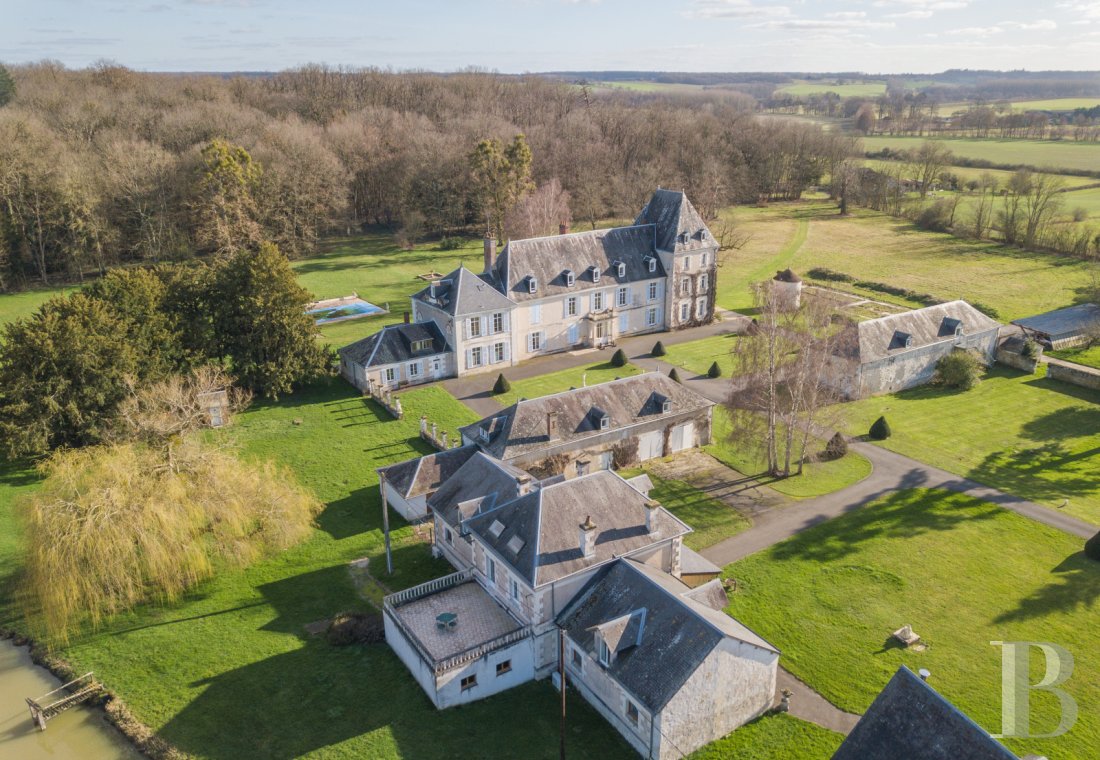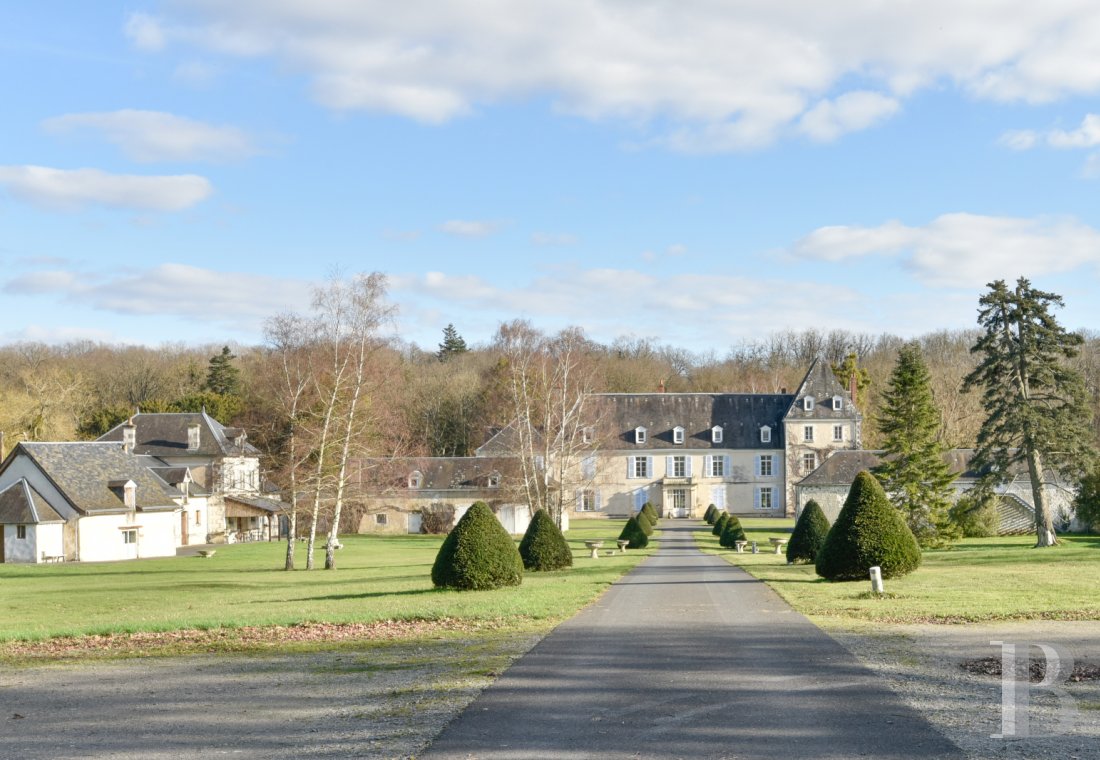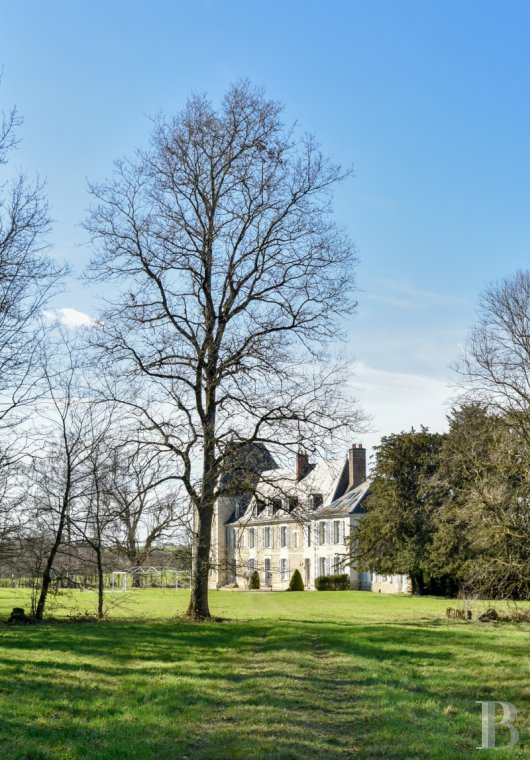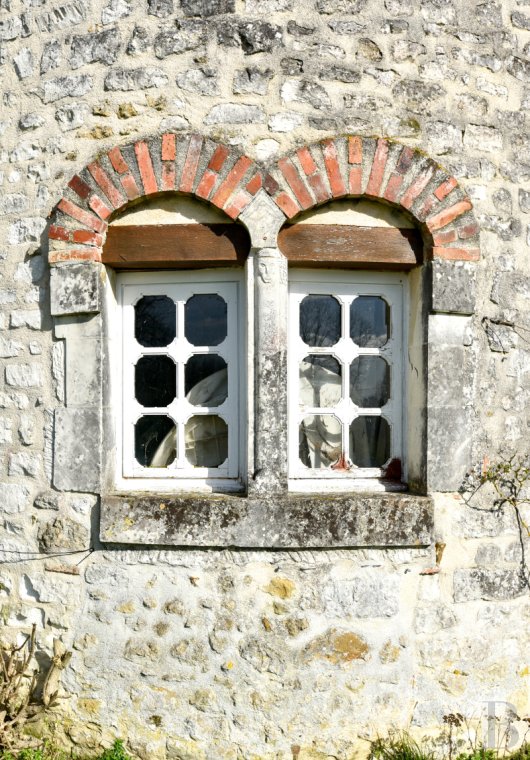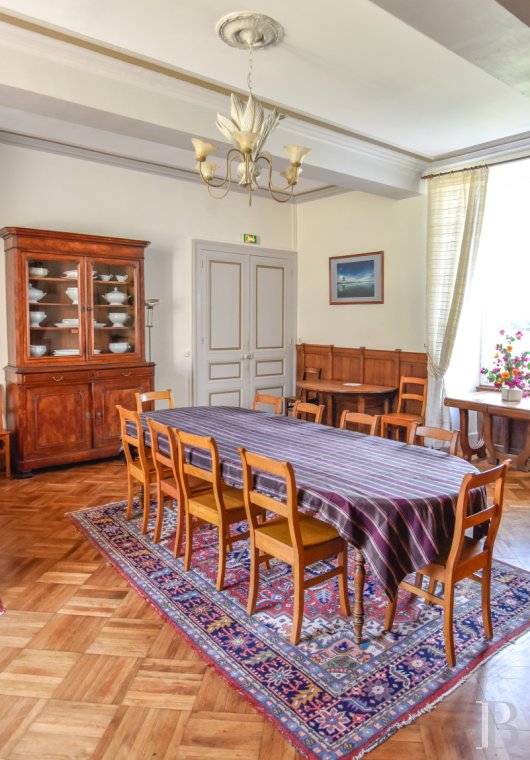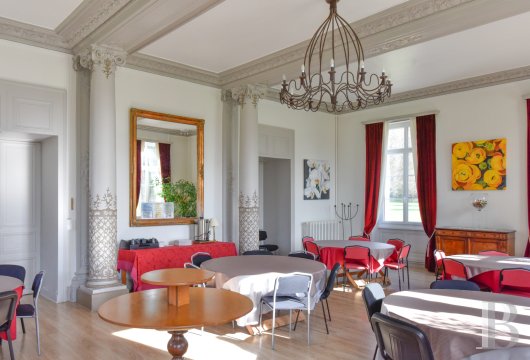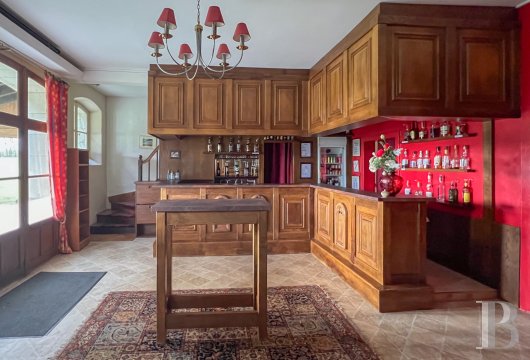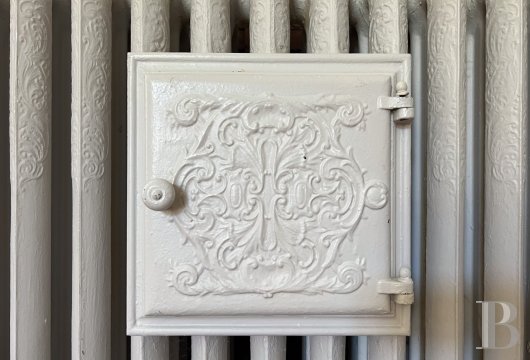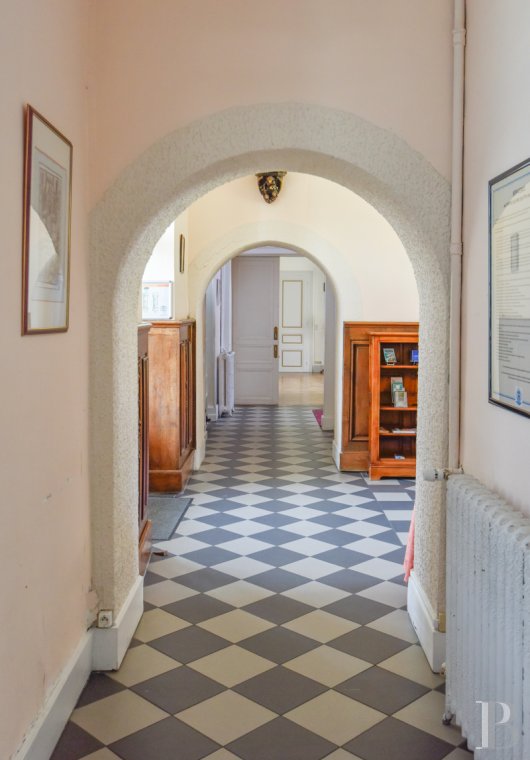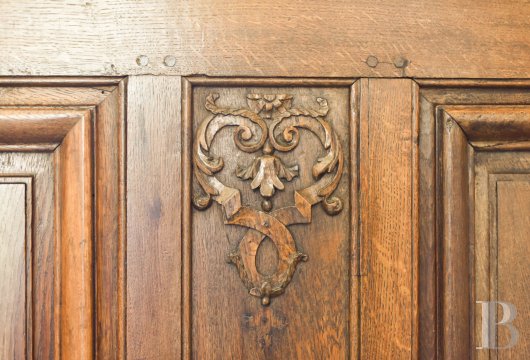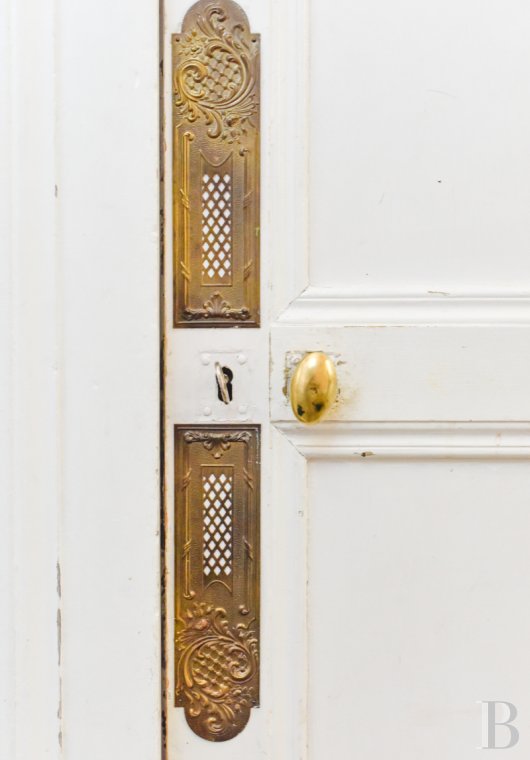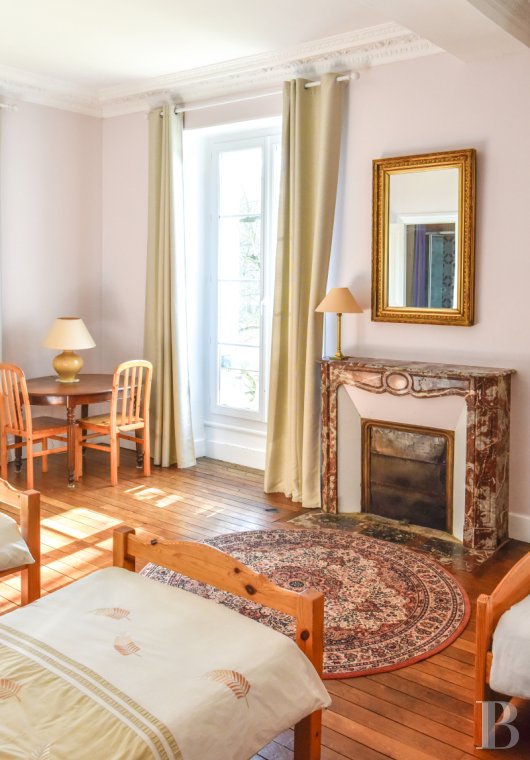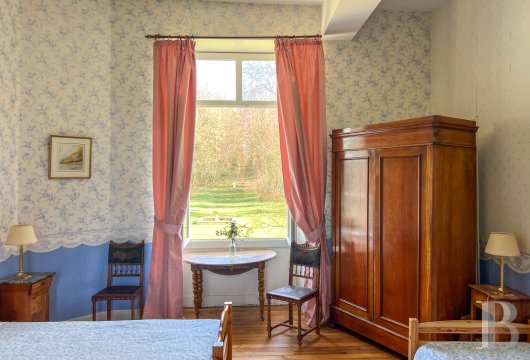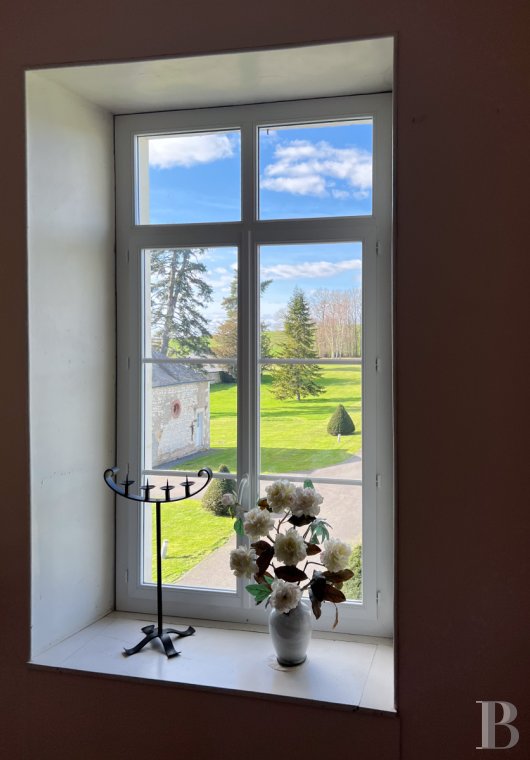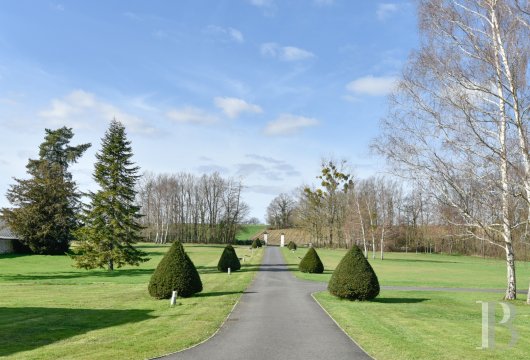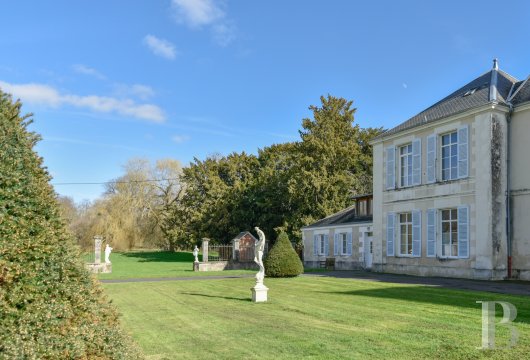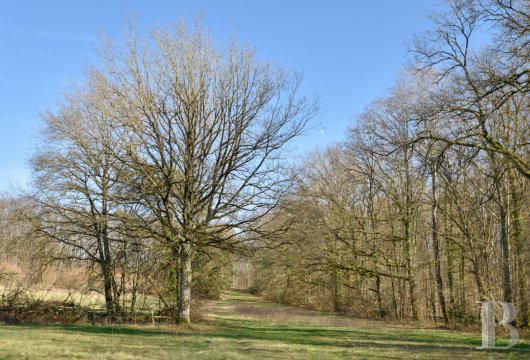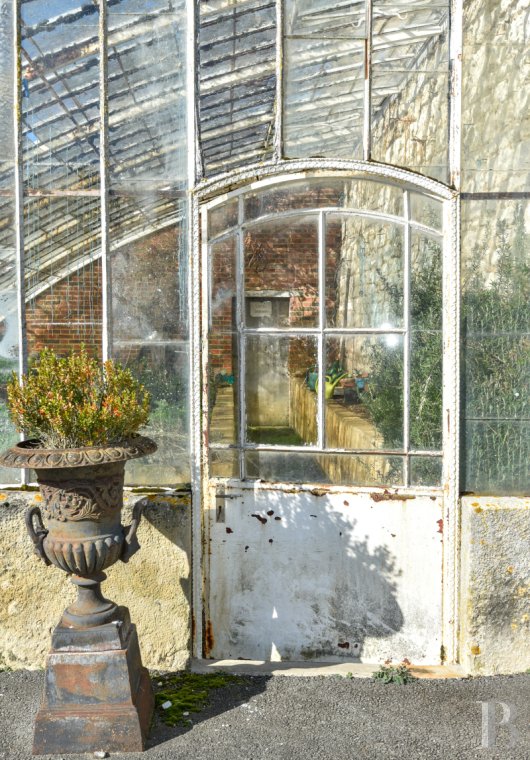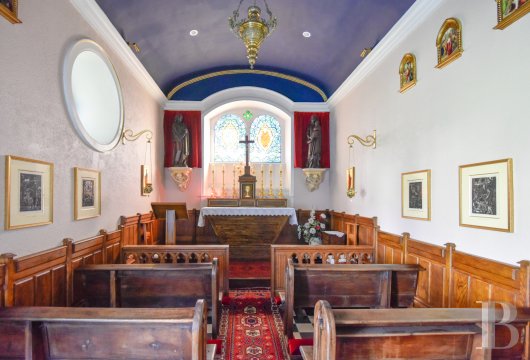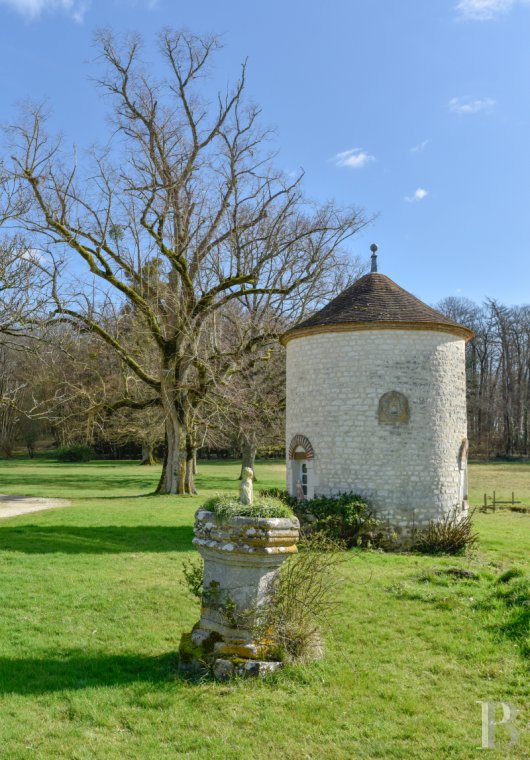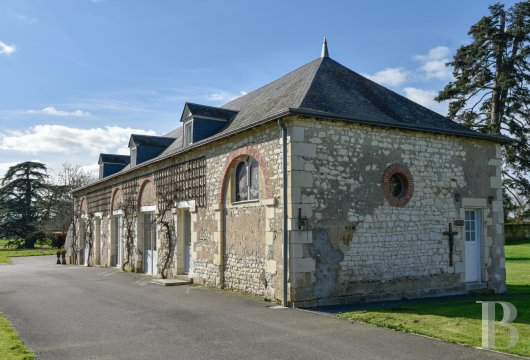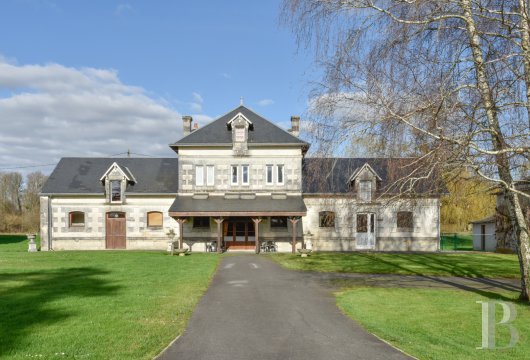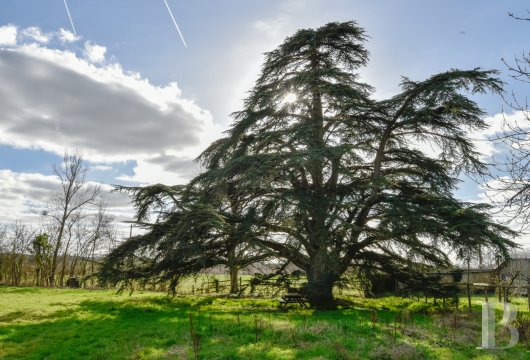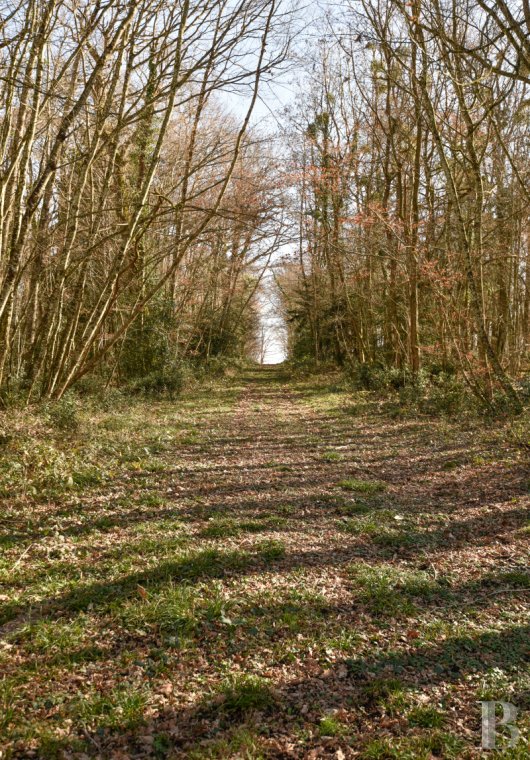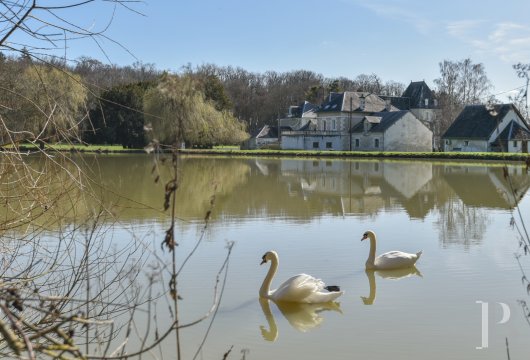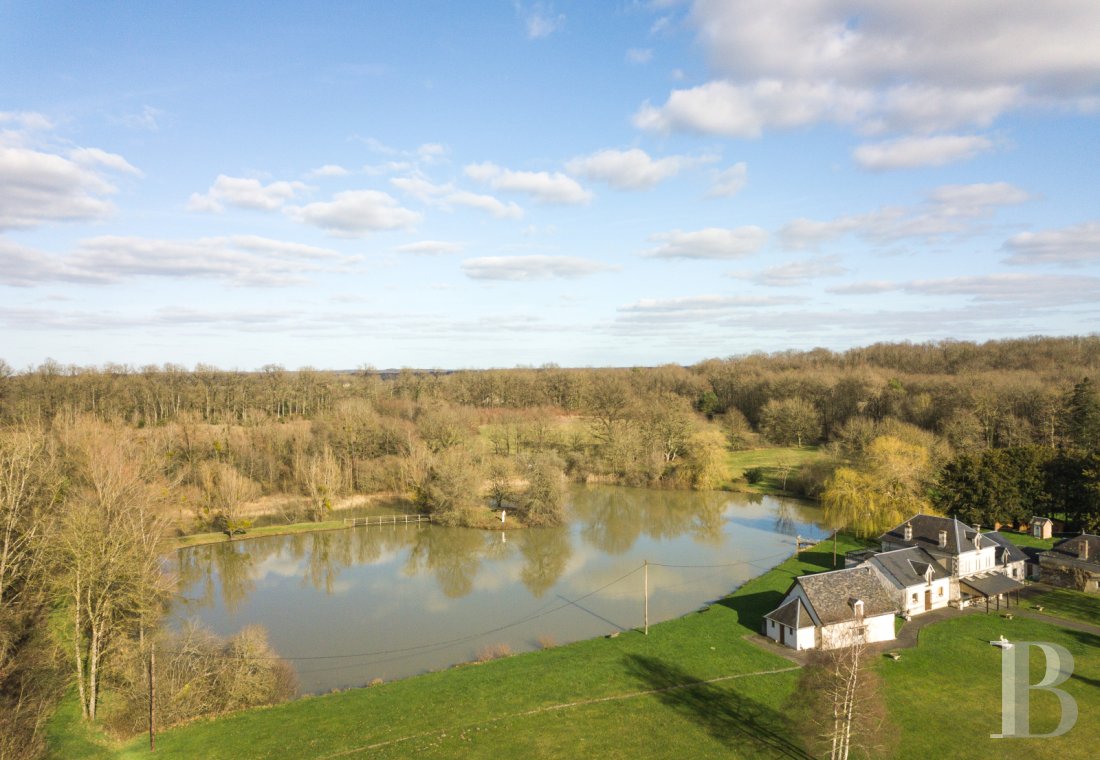Location
The property lies in the north of France’s Indre department, in the middle of the Boischaut Nord natural region that marks the limit with the Champagne Berrichon area. The Pays de Valençay walking trail runs through the nearest village. This trail stretches around 230 kilometres across the Indre and Loir-et-Cher departments with their lush, undulating landscapes where many rivers flow. The village is close to amenities and shops for everyday needs. In the nearby town of Valençay, 15 kilometres away, there is a train station. There are also train stations in the towns of Selles-sur-Cher and Châteauroux, around 30 kilometres away. Issoudun and Tours are around 40 and 90 kilometres away respectively. The nearest airport is Châteauroux-Centre airport, which is 30 kilometres from the property.
Description
The chateau
The chateau is made up of four sections that are in line with one another and that immediately stand out for their decreasing size from the square tower at the south end to the low pavilion at the north end. The edifice is a subtle blend of exposed tuffeau stone that recalls the Loire Valley chateaux and local stone laid in an opus incertum pattern and coated with white rendering. Imposing chimney stacks that are both functional and decorative rise up from the building. You enter the chateau on its west side. The east side leads out onto a vast terrace beyond which the heated swimming pool lies.
The ground floor
A covered, glazed Napoleon III style entrance area built like an avant-corps and crowned with a terrace edged with balusters marks the main way into the edifice and protects visitors from bad weather. The entrance door leads into a hallway. On both its right and left, this hall connects to a long, tiled corridor that takes you to a series of connecting rooms. Some remarkable decorative features have been kept. These include elegant wood strip flooring, marble fireplaces and wooden panelling. On the right, there is an office, a dining room and a large lounge with a marble and cast-iron fireplace beneath a window that looks out at the countryside. On the left, there is the main staircase, two lavatories, a storeroom, a flight of backstairs, and a dining room that leads out onto a terrace on the east side and connects to a professional fitted kitchen with a cold room. Lastly, on the far left, in the north wing, there is a separate two-floor apartment with a floor area of around 100m². It has an entrance area, a lounge, a fitted kitchen and a bedroom with a bathroom.
The first floor
The chateau has been used for groups and occupied by a community. These collective activities have left their mark, both in the communal areas and the bedrooms. Eight bedrooms lie along a carpeted corridor on the west side that mirrors the ground-floor corridor. Some of these bedrooms have kept fine early-20th-century wallpaper that is still in good condition. The corridor also connects to two bathrooms, four shower rooms with lavatories, and two separate lavatories. Elegant wood strip flooring extends across this level.
The second floor
In the main section, a corridor that runs along the west side connects to six bedrooms, a bathroom with a lavatory, five shower rooms and two separate lavatories. In the square tower there is a small apartment with a lounge, a kitchen and a bedroom.
The third floor
Only the square tower has a third floor. A corridor connects to four bedrooms that face south and west, a shower room, a bathroom and a separate lavatory. The former domestic staff bedrooms here all have small fireplaces that have been kept in good condition with black marble mantels.
The outhouses
Two of the lodges are faithful to the classic style that Trolliet adopted for the estate’s architecture, yet there is a notable exception: a third structure that stands at a right angle to the second one on the north-west side. In this third lodge, the architect brought out the tastes of his era, especially the architecture of train stations and spas, which this structure clearly evokes. A consecrated chapel made of stone, brick and slate completes the complex of buildings.
The group of buildings
The first lodge, opposite the chateau and on the north-west side, is reserved for groups and festivities. It lies close to the lake and includes a bar, a vast room, a kitchen, a large lounge, a smaller lounge, a library and a lavatory. On the first floor, there is an apartment with a bedroom, a fitted kitchen with a vast terrace that looks out at the lake, a dining room, a large office, a smaller office, a bathroom, a walk-in wardrobe and a separate lavatory. On the second floor, there are three bedrooms and a shower room. The materials are those used for a renovation carried out in the 1970s and 1980s. Also opposite the chateau, on the south-west side, there is a second lodge in symmetry to the first one. It has a meeting room on the ground floor and, upstairs, a large room with a roof frame like an upturned boat. The third lodge stands on the north-west side of the property, at a right angle to the first lodge. This is the first building that you see when you enter the grounds. It was designed like a train station or spa. It includes a chapel and a hallway from where you reach the first floor, where there are three rooms: a multipurpose room, an IT room and a meeting room. There is a fourth building that was doubtless once a caretaker’s house. On its ground floor, it has a large room, three shower rooms and three lavatories. On its first floor, it has another large room, a utility room and a storeroom. Other annexes that are smaller dot the property. There is a workshop, a greenhouse, a boiler room and a shed for gardening tools. You can reach them straight from service driveways.
The chapel
The chapel extends the third lodge. This consecrated chapel houses liturgical furniture and has a floor tiled in a black and white checked pattern. It also has dado panelling, a vaulted ceiling painted blue, and stained-glass windows with foliage motifs.
The grounds
The grounds cover around 30 hectares in total. Tree-dotted parkland takes up around five hectares. Its centrepiece is an artificial 1.2-hectare lake that was probably made in the 18th century. In the middle of this lake there is an island that can be reached by boat. An orchard that includes apple trees, cherry trees and plum trees lies beside a vast forest. This forest of tall, leafy, uneven trees covers more than 24 hectares and includes oaks, birches and beeches of different ages. Private bridleways and footpaths run through the forest, which is currently ornamental and not used for timber. This forest has kept some common hornbeams, a tree species that has become rare and stands out for its fluted trunks. Lastly, at the foot the chateau’s east elevation, there is a terrace. It lies beside a heated swimming pool that is eight metres long and four metres wide.
Our opinion
Set in vast, bucolic grounds, this remarkable chateau with many outhouses is absolutely splendid. Its private lake invites you to enjoy long, pleasant boat rides on its still water. The impressive hosting capacity of this property opens up the possibility of turning the place into a hotel or guesthouse, especially given the many tourists that visit the local region and the Loire Valley chateaux nearby. Indeed, the property offers a floor area of around 2,500m², 20 bedrooms, four meeting rooms, two restaurant rooms, a bar with a drinks licence, and a heated swimming pool. The Loire Valley chateaux inspired the architect behind this property’s reconstruction to create extra buildings here. This multiplicity of edifices makes this unique property a place of plurality where diversity goes hand in hand with unity, both subtly and harmoniously.
1 450 000 €
Fees at the Vendor’s expense
Reference 723338
| Land registry surface area | 29 ha 79 a 48 ca |
| Main building floor area | 2500 m² |
| Number of bedrooms | 15 |
| Outbuildings floor area | 600 m² |
| including refurbished area | 2500 m² |
| Number of lots | 16 |
French Energy Performance Diagnosis
NB: The above information is not only the result of our visit to the property; it is also based on information provided by the current owner. It is by no means comprehensive or strictly accurate especially where surface areas and construction dates are concerned. We cannot, therefore, be held liable for any misrepresentation.


